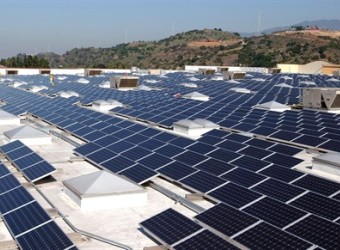As per the new research from Bloomberg New Energy Finance, renewable energy in Australia has achieved price parity with conventional fuel — without enjoying any benefits from the government.
The research agency has explained the fact in simple mathematics. It says: In Australia, electricity can be supplied from a new wind farm at a cost of AUD 80/MWh (USD 83), compared to AUD 143/MWh from a new coal plant or AUD 116/MWh from a new baseload gas plant, including the cost of emissions under the Gillard government’s carbon pricing scheme.
Further the research states that even without a carbon price, wind energy is 14 percent cheaper than new coal and 18 percent cheaper than new gas.
Not convinced yet? Read this..
According to Bloomberg Energy Finance’s research on Australia, since 2011, the cost of wind generation has fallen by 10 percent and the cost of solar photovoltaics by 29 percent. On the other hand, the cost of energy from fossil fuel plants is rising steeply.
Here’s more good news for renewable energy providers in Australia: Bloomberg survey on Australia’s four largest banks revealed that they are unlikely to finance coal without substantial risk premium due to the reputational damage of emissions-intensive investments.
The study also revealed that by 2020, large-scale solar PV will also be cheaper than coal and gas; and further by 2030, dispatchable renewable generating technologies such as biomass and solar thermal could also be cost-competitive in the country.
These findings reveal that if Australia, one of the biggest fossil fuel resources in the world, is able to achieve this price parity, countries that rely on oil imports to meet their daily energy requirements can achieve that much faster with a little effort from the stakeholders.
Commenting on the future of fossil fuel plants in the country, Kobad Bhavnagri, head of clean energy research for Bloomberg New Energy Finance in Australia, said, “It is very unlikely that new coal-fired power stations will be built in Australia. They are just too expensive now, compared to renewables.”
The next pleasant surprise comes from Saudi Arabia, whose economy was shaped by its oil wells. Despite its ability to energy-feed the world’s largest economies, the country recently admitted that oil does not represent the energy source of future.
Reflecting on the country’s plans for sustainable future, Prince Turki Al Faisal Al Saud of Saudi Arabia said at the recently held Global Economic Symposium in Rio de Janeiro, “I would like to see Saudi Arabia using 100 percent renewable energy within my lifetime.”
Saudi Arabia wants to meet one-third of the kingdom’s electricity needs by 2032 with solar energy to save 523,000 barrels of oil per day. The country aims to have 41,000 megawatts of solar capacity in the next two decades.
Saudi Arabia recently completed its biggest ground-mounted photovoltaic plant with a capacity of 3.5 megawatt in Riyadh.
By shifting to renewable energy, Saudi Arabia plans to continue reaping dollars from its oil exports while making its own land more sustainable by embracing renewable energy. Good thought!
Are Americans listening?
Rajani Baburajan

